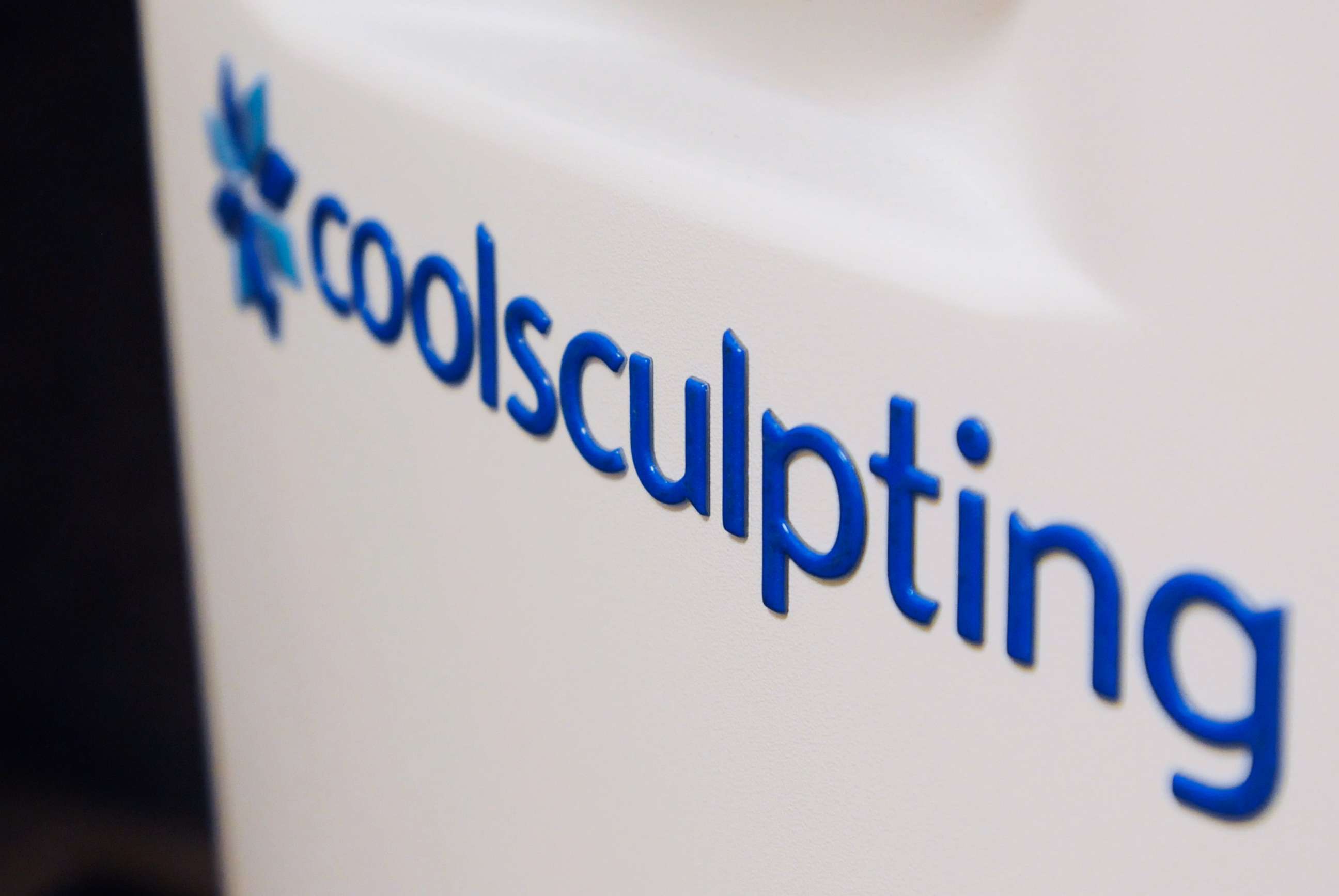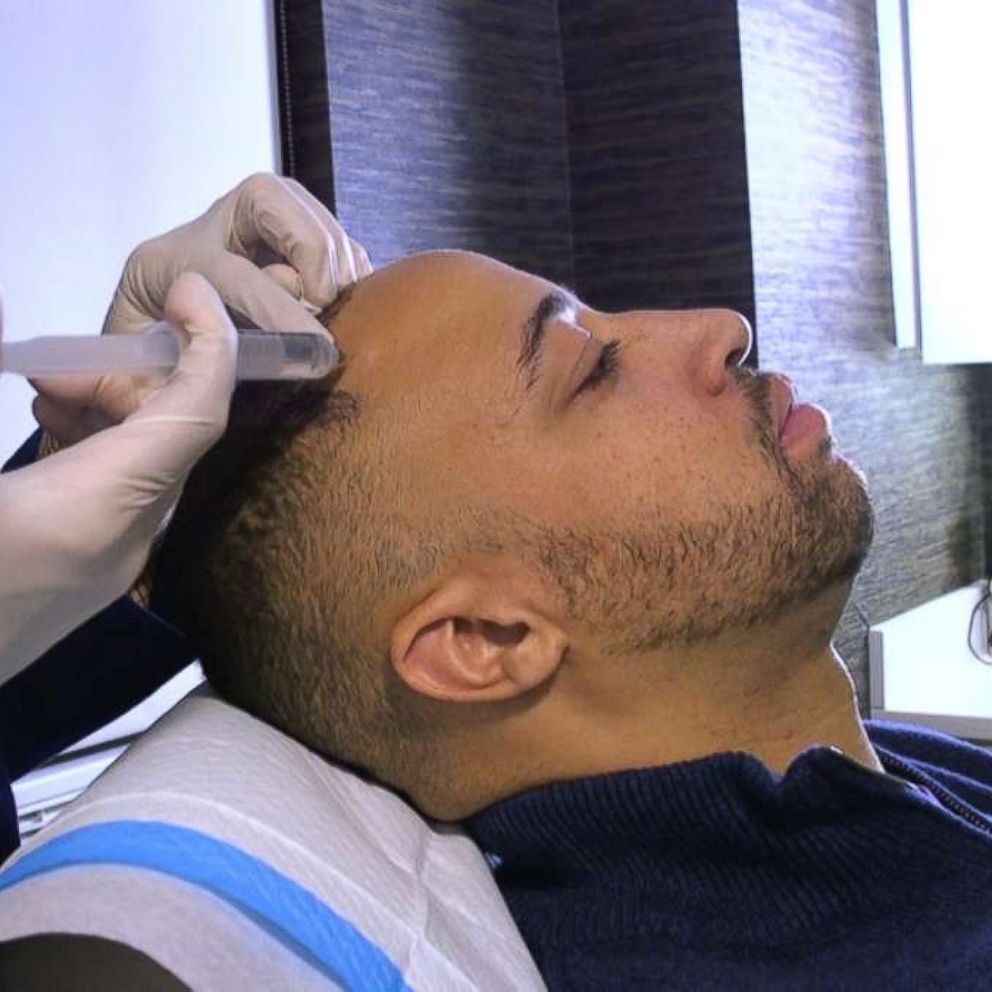Popular beauty treatment taking heat after new reporting
A new report claims that the popular cosmetic treatment CoolSculpting may pose a higher risk for a serious side effect than previously thought.
A recently published New York Times examination, which reportedly included a review of "internal documents, lawsuits, medical studies and interviews," concluded that the risk of a possible side effect of disfigurement only correctable by surgery, may have been previously underreported.

"I spoke with over a dozen doctors who all said that they think the side effect is underreported by the company and this is something they've either observed in their own practice or have noticed in research," Anna Kodé, a New York Times reporter, told "Good Morning America."
The CoolSculpting device was cleared by the Food and Drug Administration in 2010. Allergan Aesthetics, the parent company of Zeltiq Aesthetics, which markets and licenses the CoolSculpting devices, says the treatments are able to "freeze" fat away, citing in 2010 that the treatment is a safe and painless alternative to other fat reduction services, like liposuction.
CoolScupting has since become nearly ubiquitous in dermatology offices, plastic surgery practices and medical spas.
The technology, which was developed in a lab associated with Harvard Medical School, uses a technique called "cryolipolysis," a nonsurgical technique that applies extreme cold to targeted areas of fat, ultimately reducing some of the fat cells, according to research published in the journal Clinical, Cosmetic and Investigational Dermatology in 2014.
Once treated, some of the frozen fat cells die over the course of a few months, leaving a desired slimming effect.
However, for some patients, the procedure produces different results. A serious side effect -- known as paradoxical adipose hyperplasia -- may occur in some cases, which is when some of the fat cells enlarge, harden and sometimes take the shape of the applicator -- leaving blocky chunks around treated parts of the body.
CoolSculpting states on its website that "rare side effects" may occur following CoolSculpting treatment, including paradoxical hyperplasia, which the manufacturer says occurs in a current reported rate of about 1 out of 3000 treatments.
"These procedures are not for everyone," it states, adding, "You should not be treated with CoolSculpting or CoolSculpting Elite if you suffer from cryoglobulinemia, cold agglutinin disease, or paroxysmal cold hemoglobinuria."
In response to the New York Times report, Allergan Aesthetics said in a statement that CoolSculpting "has been well studied with more than 100 scientific publications" and claimed "more than 17 million treatments have been performed worldwide."
Allergan said the company is "compliant with all adverse event reporting requirements" and added that they encourage doctors and their patients to discuss side effects before the start of any CoolSculpting treatments.
"All procedures, including those which involve the use of a medical device, have potential side effects. We encourage doctors and patients to discuss potential benefits and risks before any procedure. While the cause of PH is currently unknown, we have continued to inform healthcare providers and provide educational materials for them to discuss PH risk with patients. In addition, we offer a comprehensive training and education curriculum in partnership with CoolSculpting® providers," Allergan said.
The company also said it will "continue to review scientific literature related to PH and update provider materials as new data emerges."
CoolSculpting found itself in the spotlight in September 2021 after model Linda Evangelista alleged that CoolSculpting left her "brutally disfigured."
The model claimed on Instagram that the treatments had left her "permanently deformed" even after undergoing several corrective surgeries. She claimed she had "not [been] made aware" of the risk of developing paradoxical adipose hyperplasia prior to the treatments.
"PAH has not only destroyed my livelihood, it has sent me into a cycle of deep depression, profound sadness, and the lowest depths of self-loathing," she wrote in a statement posted to her Instagram account. "In the process, I have become a recluse."
Evangelista filed a $50 million lawsuit that same month against Zeltiq Aesthetics, claiming the CoolSculpting treatments had caused her to suffer disfigurement, pain, severe emotional distress and economic losses that rendered her unemployable.
At the time, Zeltiq declined to comment on ongoing litigation. In a December court filing, the company claimed that Evangelista had been warned of the procedure's risks beforehand and asked the court to toss out the case.
Evangelista stated in July 2022 that she had settled her case against Zeltiq, adding that she was ready to move forward and "put this matter behind me."
A Zeltiq representative told British Vogue that month that the company was "pleased to have resolved this matter with Ms. Evangelista."
"Our focus continues to be on empowering confidence by providing safe, reliable aesthetics products and services backed by science," the representative said. "CoolSculpting is an FDA-cleared, non-invasive treatment for visible fat bulges in nine areas of the body."







